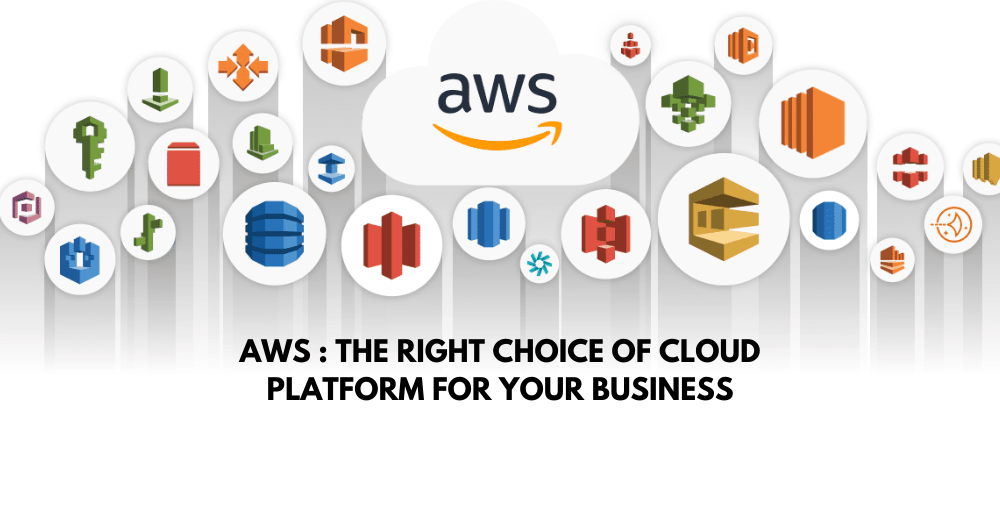Selecting the appropriate Amazon Web Services (AWS) services for your business needs is a critical step in building a scalable, secure, and efficient cloud infrastructure. AWS offers a vast array of services, each designed to address specific aspects of computing, storage, databases, machine learning, and more. In this guide, we’ll explore key considerations and factors to help you make informed decisions when choosing AWS services for your business.
1. Define Your Business Requirements:
– Clearly outline your business objectives and technical requirements. Consider factors such as scalability, performance, security, compliance, and budget constraints. Understanding your needs will guide the selection of suitable AWS services.
2. Compute Services
- EC2 (Elastic Compute Cloud): EC2 provides scalable computing capacity in the cloud. Choose the right instance type based on your workload, whether it’s general-purpose, memory-optimized, or GPU instances for machine learning tasks.
- Lambda: For serverless computing, Lambda allows you to run code without provisioning or managing servers. It’s ideal for event-driven applications and microservices architectures.
3. Storage Services
S3 (Simple Storage Service): S3 is a scalable object storage service suitable for storing and retrieving any amount of data. Consider S3 for static website hosting, data backup, and multimedia storage.
EBS (Elastic Block Store): EBS provides block-level storage volumes for use with EC2 instances. Choose EBS based on performance requirements, durability, and data persistence needs.
4. Database Services
RDS (Relational Database Service): RDS manages relational databases like MySQL, PostgreSQL, and Oracle. Consider RDS for easy database administration, automated backups, and scaling.
DynamoDB: For NoSQL database needs, DynamoDB offers a fully managed, scalable, and low-latency solution. It’s suitable for applications with variable workloads.
5. Networking Services:
VPC (Virtual Private Cloud): VPC allows you to provision a logically isolated section of the AWS Cloud. Configure your network, including subnets, route tables, and security groups, to meet your business’s specific requirements.
CloudFront: For content delivery and low-latency access, CloudFront is a content delivery network (CDN) that securely delivers data, videos, applications, and APIs to customers.
6. Security and Compliance:
IAM (Identity and Access Management): IAM enables you to manage access to AWS services securely. Define roles, permissions, and policies to control who can access your resources.
Key Management Service (KMS): KMS allows you to create and control cryptographic keys used to encrypt your data. It’s crucial for securing sensitive information.
7. Analytics and Machine Learning:
Sagemaker: For machine learning, Sagemaker provides a fully managed service for building, training, and deploying models. Consider it for streamlining your machine learning workflows.
Redshift: Redshift is a fully managed data warehouse that allows you to analyze large datasets with high-performance queries.
8. Cost Management:
Cost Explorer: Utilize Cost Explorer to analyze your AWS spending patterns and identify areas for cost optimization. Set up budgets and alerts to manage costs effectively.
9. Monitoring and Logging:
CloudWatch: CloudWatch provides monitoring and observability for AWS resources. Set up alarms, collect and track metrics, and gain insights into your application’s performance.
10. Evaluate Managed Services:
Consider using managed services like AWS Managed Services (AMS) or AWS Organizations for central management of multiple AWS accounts.
Choosing the Right AWS Services
Understanding your needs is the greatest place to start when selecting the appropriate AWS services for your business. After determining your needs, you can begin comparing the various AWS services that are offered.
There exist multiple approaches for assessing AWS services. You can speak with an AWS specialist, view the tutorials, or read the documentation.
Following your assessment of the various AWS services, you can draft an AWS migration roadmap. A migration schedule, the resources you require, and your financial constraints should all be included in this roadmap.
In conclusion, choosing the right AWS services involves a thorough understanding of your business requirements, performance considerations, security needs, and budget constraints. By carefully evaluating the services available in AWS and aligning them with your specific needs, you can build a robust and scalable cloud infrastructure that supports your business goals effectively.
For assistance selecting the best AWS services for your business, get in touch with L4it, right now. We would be pleased to assist you in reaching your company’s objectives.


